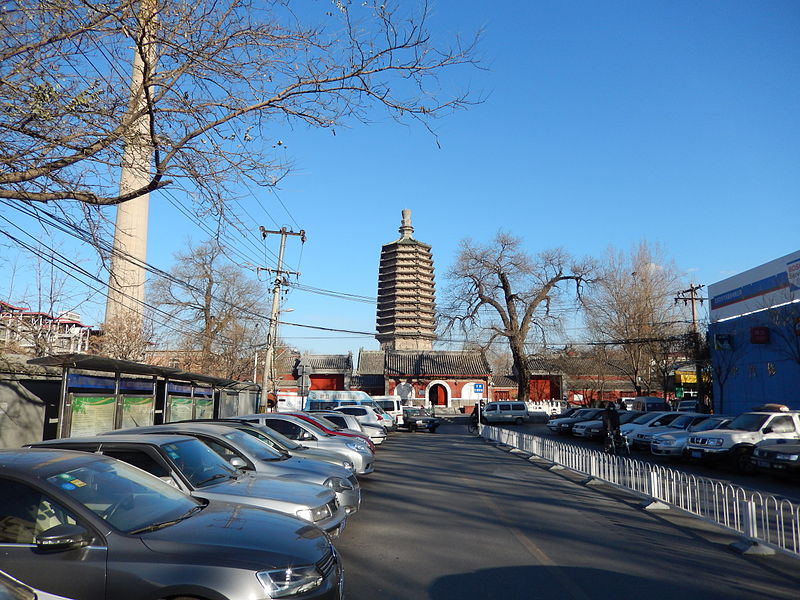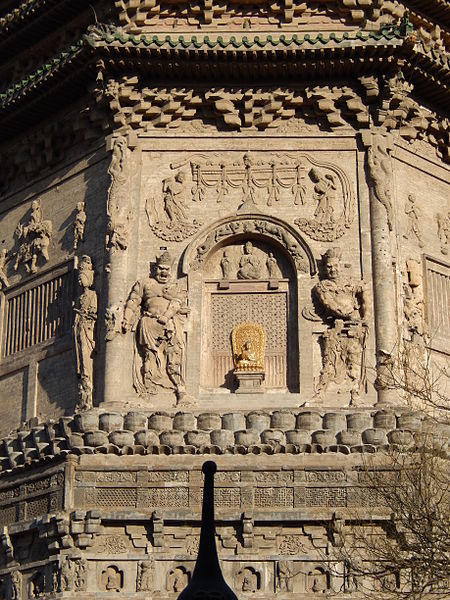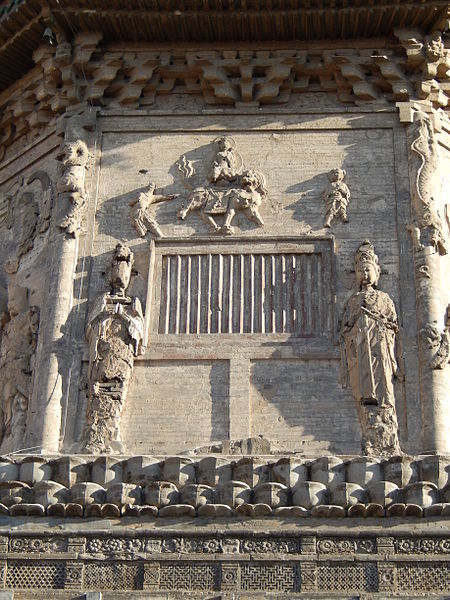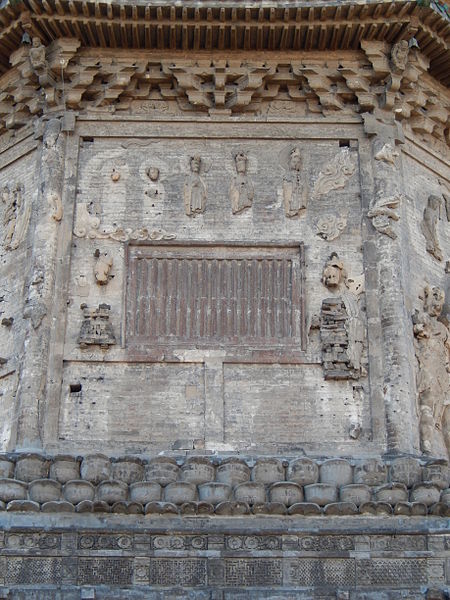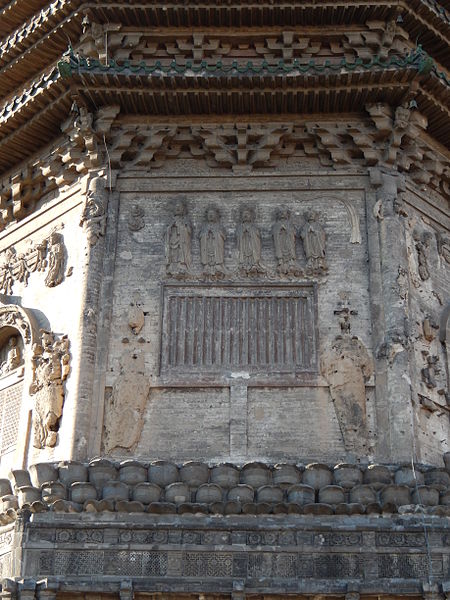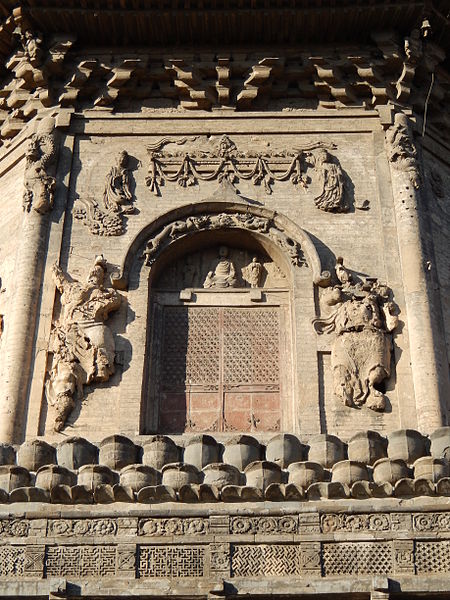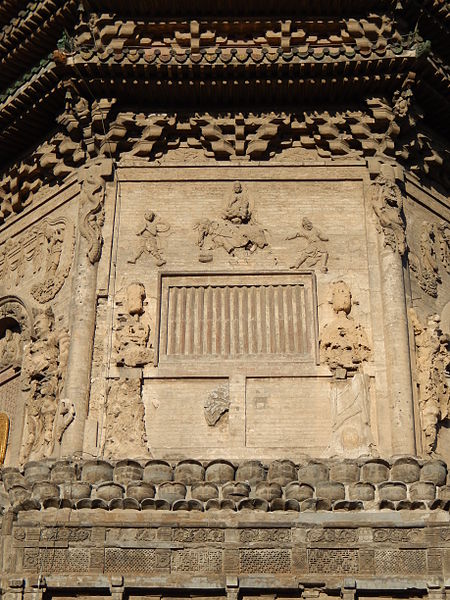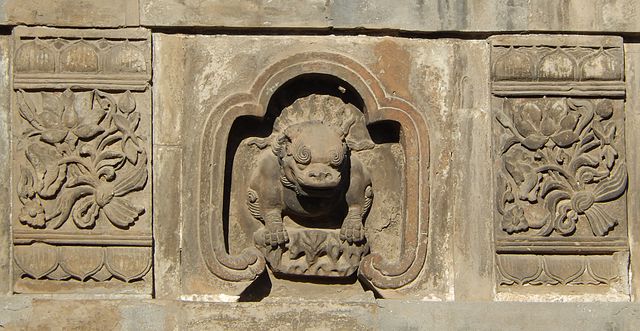Diary of a Rambling Antiquarian
Thursday, 12 December 2013
Three Beijing Pagodas : Tianning Temple
Yesterday, after the conclusion of the Tangut conference, there was a group outing for the conference participants to the Cloud Platform at Juyongguan, which I had already visited in 2011 when I was last in Beijing, but I was glad to go again with my new camera. Today everyone but me is going home, and I have to change hotels. I get up early to go to my third, and oldest, pagoda, which is some twenty minutes walk from the nearest subway station at Changchunjie. The 57.8 metre pagoda of Tianning Temple 天寧寺 still dominates the skyline in this corner of Beijing, even though it is dwarfed by a towering factory chimney inappropriately sited right next to the temple.
View of Tianning Temple from the east
This octagonal brick and stone pagoda was built in the early 12th century, during the last years of the Liao dynasty (916–1125), supposedly on the site of a wooden pagoda built in 602 by Emperor Wen of Sui. Like many Liao dynasty pagodas, this one is solid with fake doors and windows sculptured onto its eight sides. However, even solid pagodas are not entirely solid, and the pagoda should have a sealed underground chamber (地宮) where Buddhist relics, statues and sutras were placed when the pagoda was built. Sometimes the contents of these underground chambers are discovered during renovation or demolition, and sometimes thieves dig tunnels under the pagoda to reach hoped-for treasures, as was the case in 2011 when thieves dug a tunnel into the Liao dynasty pagoda at Nan'an Temple in Hebei. As far as I know, the underground chamber of the pagoda at Tianning Temple remains untouched, and may still contain Buddhist relics or even examples of lost Khitan translations of Buddhist sutras.
View of Tianning Temple from the south
Inside the temple there is a constant trickle of devotees circumambulating the pagoda, one man prostrating himself at every step, in the Tibetan fashion, but when I took the picture below all the circumambulators must have been on the other side of the pagoda. Looking at the picture of the pagoda piercing the perfect blue sky, it is hard to believe that just days ago the entire city was smothered by smog.
View of Tianning Temple Pagoda from the south
Old photograph of Tianning Temple Pagoda (from the north)
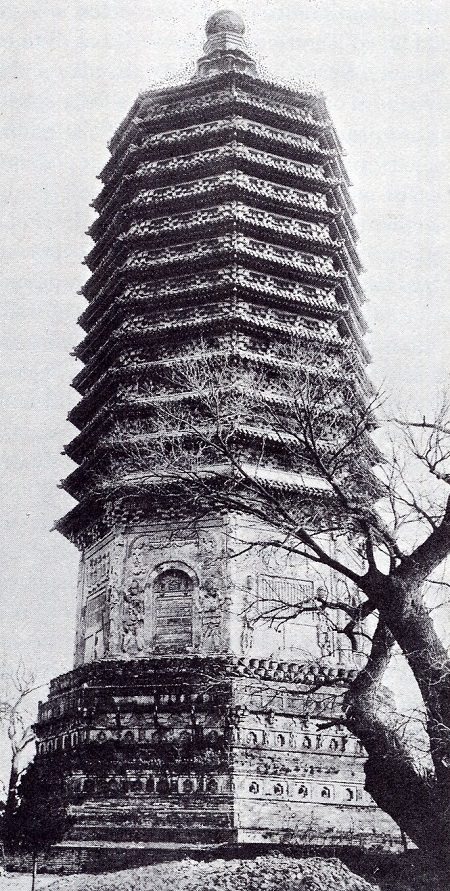
Source: Laurence Sickman and Alexander Soper, The Art and Architecture of China (The Pelican History of Art, 1971) p. 444 fig. 296
Sculptured panel on the south side of the pagoda
Sculptured panel on the south-west side of the pagoda
Detail showing the Bodhisattva Mañjuśrī riding a lion
Sculptured panel on the west side of the pagoda
Sculptured panel on the north-west side of the pagoda
Sculptured panel on the north side of the pagoda
Detail showing the fourteen-armed form of the Bodhisattva Avalokiteśvara
Sculptured panel on the north-east side of the pagoda
Sculptured panel on the east side of the pagoda
Sculptured panel on the south-east side of the pagoda
Detail showing the Bodhisattva Samantabhadra riding an elephant
Detail of the bottom frieze around the pagoda
Satisfied, I return to check out of my hotel, and make my way to a new hotel (the one we stayed at two years ago). In the afternoon I will pay a visit to the National Musuem, and tomorrow is another day of cultural excursions.
Beijing | Liao dynasty | Pagodas
Index of Rambling Antiquarian Blog Posts
Rambling Antiquarian on Google Maps

